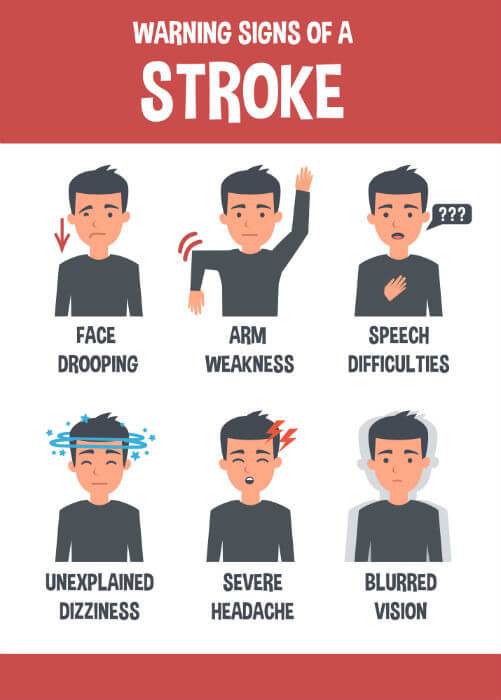Symptoms of a stroke can vary according to the area of the brain affected by the loss of blood supply with several changes originated by that shortage of that body fluid, such as perception or movement. Also, depending on the intensity of the stroke, symptoms can be very different; a mild stroke could generate a temporary weakness while a stronger one could lead to a permanent paralyzing of one side of the body or the inability to speak. The faster the blood supply is restored the less chance of a permanent effect in the organism.
A fast way to recognize stroke symptoms and signs is by using the acronym FAST, which is elaborated by the following words:
• F = Face Drooping
If a person, who was asked to smile, shows a drooping in one side, the chance of a stroke taking place is really high
• A = Arm Weakness
Tell the person to raise both arms to test the presence of a stroke. If there is one arm going downward at the request, it is a clear sign of one-sided arm weakness and the possibility of a stroke is most likely occurring at the moment.
• S = Speech Difficulty.
An intelligible speech should be considered a serious indicator of a stroke. If a person supposed to have a stroke cannot repeat a simple sentence or there is any abnormality when speaking, it is advisable to look for help.
• T = Time to look for Help.
Call 911 or any other emergency center functioning in the place where the person with the stroke is being. Look for help and/or send the person to the nearest hospital even if the symptoms are no longer present.
This is a fast guide to help the recognition of a stroke in any woman or man at home, work, or study center. Such factors are the following:
1. Debility or paralysis of any member of the body.
2. A numbness sensation like pins or needles being placed anywhere in the body.
3. Trouble in walking or a balance and coordination loss.
4. Blurred vision or sight troubles in one of both eyes.
5. Dizziness.
6. Severe headache, one completely different than previous ones
7. Confusion.
8. Impossibility to speak, unclear speech, or inability to understand speech.
9. Sensation loss in any part of the body.
10. Loss of memory.
11. Changes in behavior without any logical explanation.
12. Muscle rigidity.
13. Swallowing turns difficult.
14. Uncontrolled eye movements.
The presence of the signs and symptoms described in the above lines is a clear indication that help should be looked; avoiding in this way a permanent damage in the person who experienced the stroke and reducing the worry and stress in people related to the patient such as relatives and friends.

